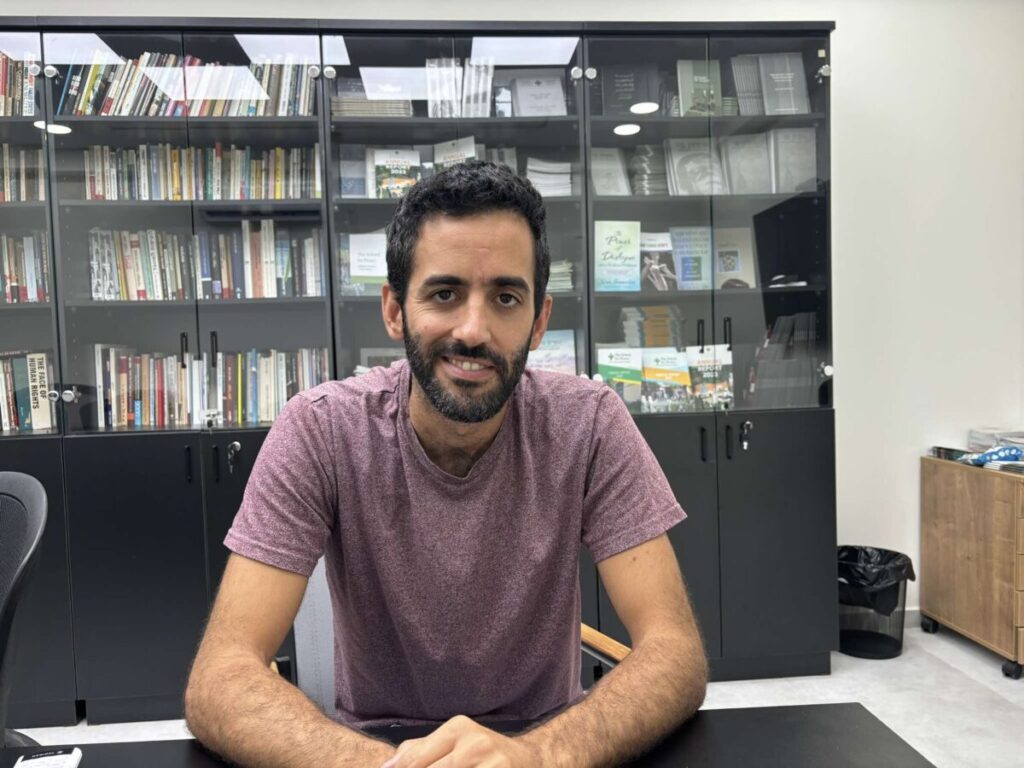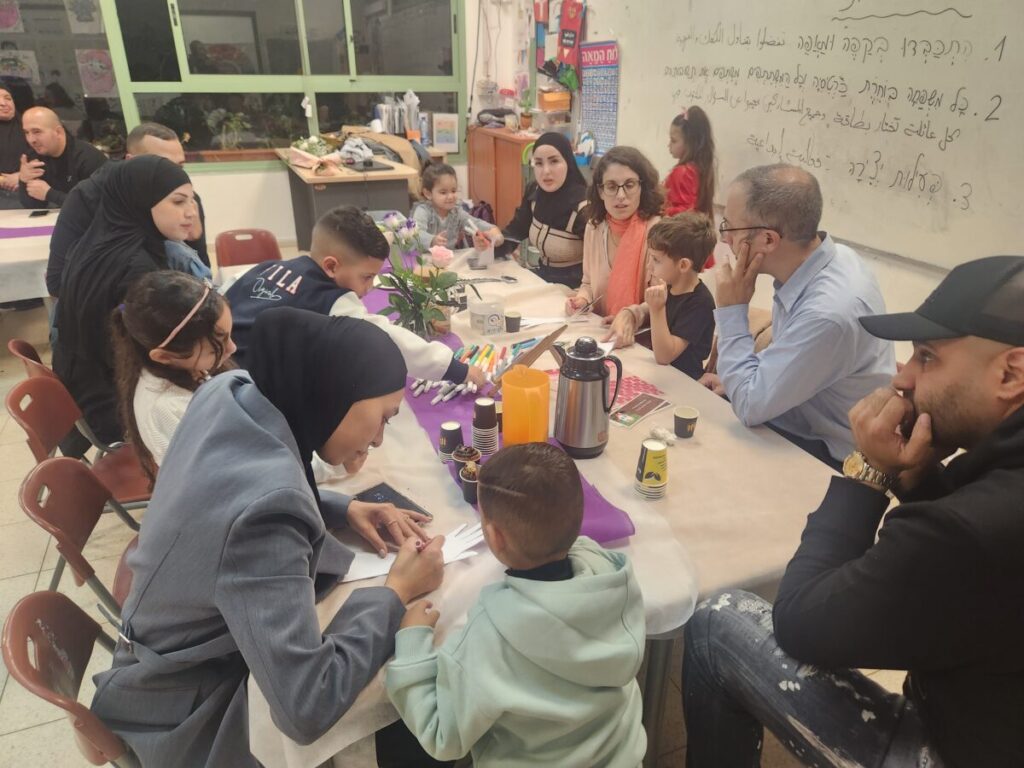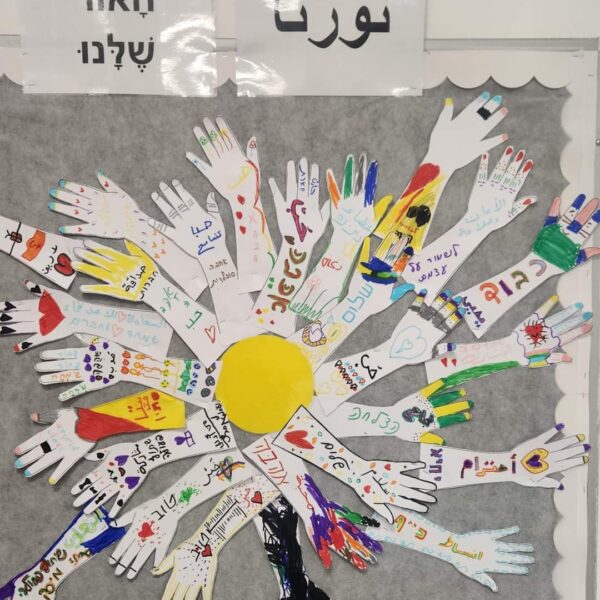Neve Shalom/Wahat as-Salam is a unique village, located between Jerusalem and Tel Aviv. Israelis and Palestinians have chosen to live together there and offer an alternative for peace that actually works. Created in 1974 by Brother Bruno Hussar, this oasis of peace has notably received the Buber-Rosenzweig Medal in 1987 and the Niwano Peace Prize in 1993.
Here, the way of life is very different from the rest of the Israeli cities. The approximately 300 inhabitants of Neve Shalom live in harmony and advocate absolute equality: 50% Jews and 50% Arabs share the lands that once belonged to the Latrun monastery of the village. They thus form a single community and share the same values based on coexistence, communal living, respect, and a desire to know the other. No mosque or synagogue in sight, religion is part of the private domain, but most citizens are secular. Only a spiritual center has been built, where residents can both pray and practice meditation and yoga.
300 families on waiting list
The village attracts many people who believe in peace and wish to settle there, but the selection process is tough. The residents are chosen by an admissions committee that assesses their compatibility with the village's values and spirit. Over 300 families are currently on the waiting list because spots are limited due to the lack of available land.

A particular emphasis is placed on education. In Neve Shalom, from nursery school to high school, Jewish and Arab students are educated in the same classes, unlike the education system in Israel which is mostly done in separate institutions. Students learn both Hebrew and Arabic, English, as well as culture, literature, and mutual traditions. 80% of the children studying in Neve Shalom live in nearby localities, including Lod, Ramle, or Abu Gosh. The students must then continue their academic journey from 6th grade to high school outside the village.
"At school, children learn from a young age about the holidays, language, and culture of the other. The goal is for them to be completely bilingual in the end. Their integration into society is then much simpler because they have received a comprehensive education that allows them to be comfortable in both the Jewish and Arab communities," explains Nir Sharon, CEO of the schools in Neve Shalom and resident of the village since 2002.
A model of living together that differs from mixed cities
“The people who established this village believed in a different option than those offered by the government. They had an ideal that they wanted to apply to reality and were later joined by citizens from all over the country. We organize festive meals for Iftar during Ramadan, or events around the pool and dialogues. Decisions regarding the village are made together, some people are even part of peace associations with which we work,” explains Nir. “We could apply the principles of Neve Shalom to other places in Israel, but the goal is not to duplicate the village.”
Unlike mixed Israeli cities like Yafo, Haifa, or Acre, where Jews and Arabs have been forced to coexist, in Neve Shalom, people have chosen to live together, with a deep conviction that lasting peace is possible. "In mixed cities, everyone has their own neighborhood. If Jews and Arabs don't want to talk to each other, they can, they have the choice. Here it's impossible, because Jewish and Arab houses are attached, we all live within the same area," observes Nir.
Every year, the village attracts tourists from all over the world, and tours are organized to present the ideology and history of the village, as well as to meet the key figures of Neve Shalom.
The School for Peace
Neve Shalom also hosts the School for Peace (SFP). It acts as a support organization and guides the participants' initiatives. Established in 1979 as the first educational institution in Israel promoting large-scale change towards peace and more equal and just relations between Arabs and Jews, it also offers courses for environmentalists such as leadership in mixed cities. Additionally, a program has been implemented to train 120 future politicians, Israelis and Palestinians, to become the leaders who will bring peace and justice between the two peoples.

Through workshops, training programs, and special projects, the SFP raises awareness among participants about the conflict and their role in it, enabling them to take responsibility for changing the current relationships between Jews and Palestinians.
"We organize academic programs in universities, dialogues, and courses for individuals who are dedicated to promoting more equality and justice in Israel and the region. The fact that people share the same political views does not mean they have similar aspirations, as there are many differences between Jews and Arabs. But we believe that knowledge and dialogue must be combined with actions to build peace," says Roee Silberberg, director of the School for Peace.
The impact of October 7
The shock and horror felt following the atrocities committed by Hamas in Israel on October 7th had an unprecedented impact throughout the country, including in Neve Shalom. The village residents had to deal with reactions from both sides and find ways to maintain harmony despite the reality of war.
"The roles have reversed, as normally the Palestinians are the victims, and now, it's the first time since 1973 that the Jews have been afraid to exist as a nation, and that changes perspectives, it changes everything. The Arabs have condemned the actions of Hamas and the Jews have shared their fears, the emotion brought us together. But the impact is there," analyzes Nir.
"Here, we witness firsthand the reactions of the Arabs regarding the war in Gaza, for example, and the reactions of the Jews after October 7th. After an attack like that, people instinctively seek comfort by coming closer to their own kind, it's human nature. Here, after the start of the war, we had to face a challenge that did not arise anywhere else: understanding what is expected of each other and what the other expects from us, these are questions specific to the village," says Nir.
According to Roee, since October 7th, "it is clear to everyone that there will be no future in this country without an agreement. We cannot live indefinitely alongside the conflict without resolving it; it no longer works. I believe that a majority considers that a solution must be found quickly, which involves a mutual agreement between Israelis and Palestinians."
Last June, an Arab-Jewish dialogue on the theme of liberation was organized over two days by the School for Peace. The theme of liberation revealed deep fears, never addressed before. During the dialogue sessions, the Jews expressed their concerns about the loss of their personal security and the violence of the massacre. At the same time, the Palestinians voiced their fear of the annihilation of Gaza.
The road is still full of obstacles towards total peace, but Neve Shalom gives a glimmer of hope in a country where everything is now uncertain.

